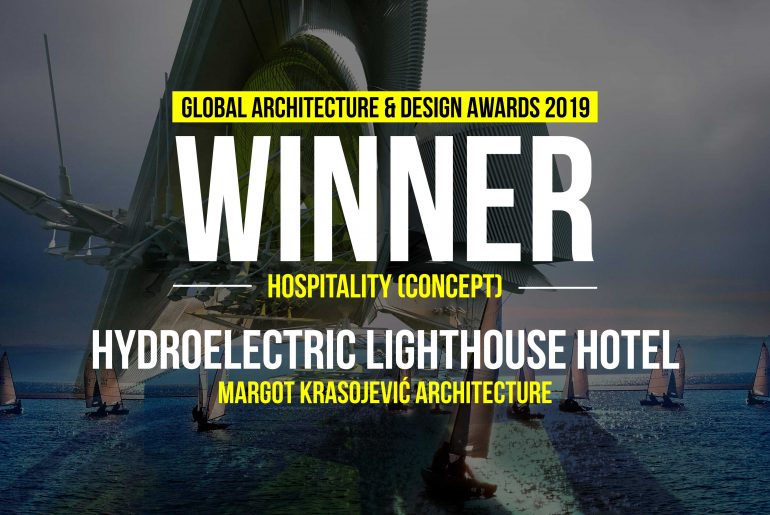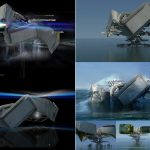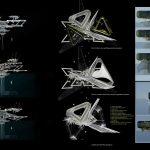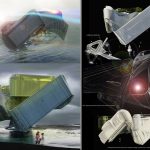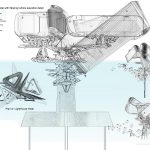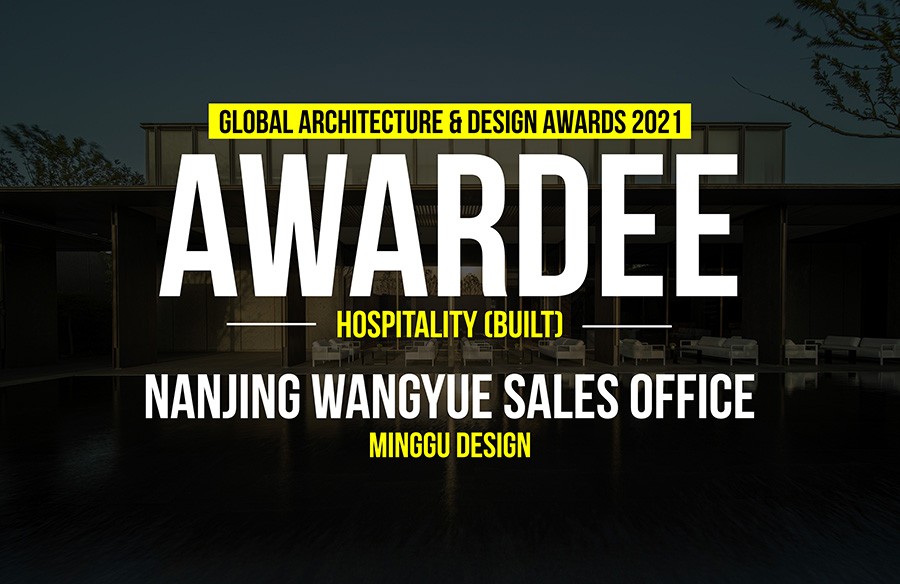The project brief is to design an offshore lighthouse hotel. The design criteria address renewable energy by harnessing wave energy to generate electricity using the building’s form. The hotel is located off the coast of mainland South Korea near the island of Jeju, reached by boat in water depths between 1500 and 7000 ft, it is a functioning power plant.
Global Design & Architecture Design Awards 2019
First Award | Category: Hospitality (Concept)
Studio: Margot Krasojević Architecture
Architect: Margot Krasojević
Country: United Kingdom
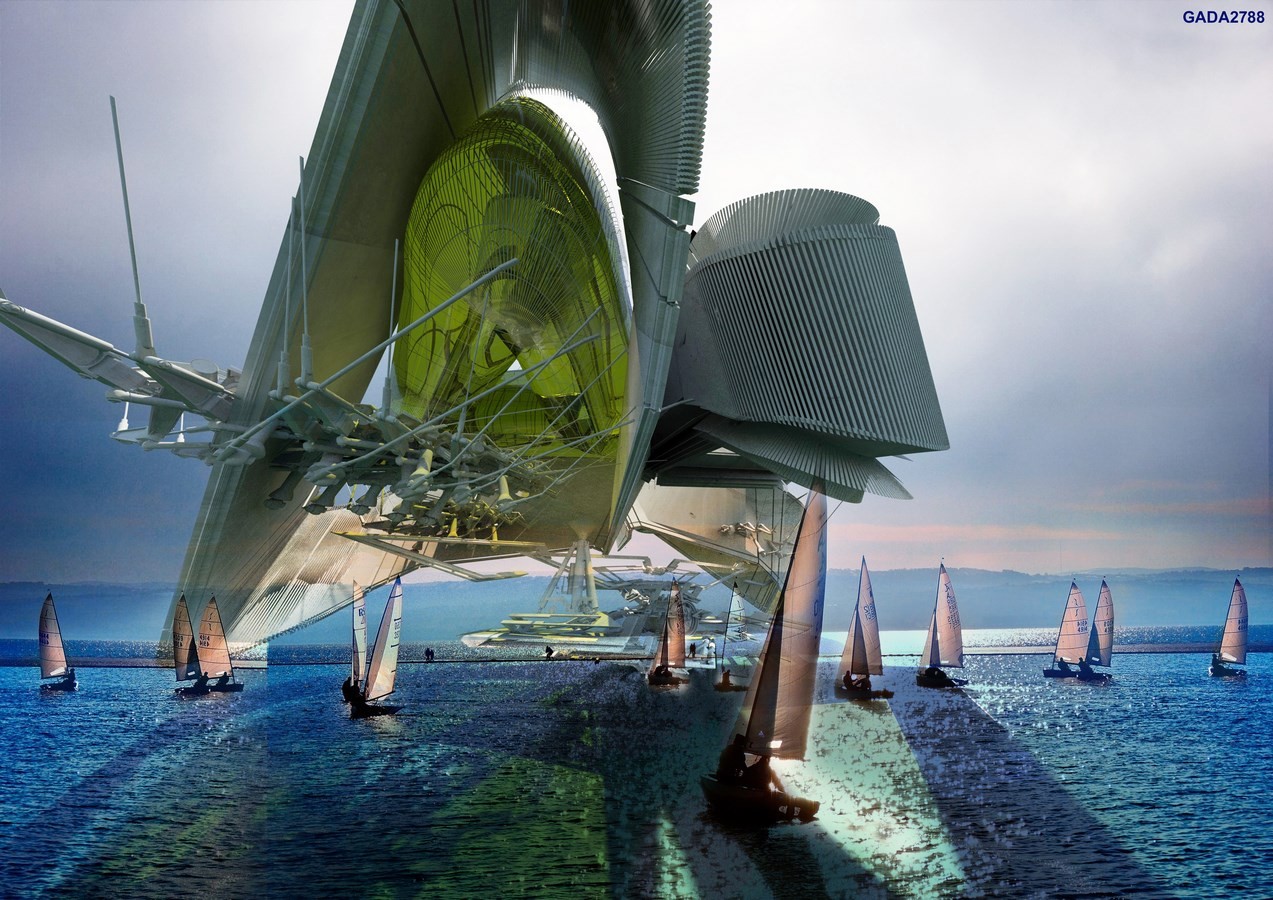 The lighthouse turbine hotel design is made up of three building elements that contain the living and social areas of the hotel. Triple-layered aluminum surface elevations, which are wrapped around the hotels building elements and suspended from the pivot primary structure, enclose flipwing turbines which produce electrical energy when they are lowered into the sea, the water crashes against the aluminium panels and flips the hydropower turbines that are caught. like muscles, between the layers of aluminium clad surfaces. The turbine elevation movements are choreographed by the pivot wheel hydraulic frame section, this pivot wheel is bolted to the main primary structure to reduce fatigue stress caused by changing loads due to movement and load redistribution. The pivot wheel moves and tilts lowering and revolving the elevations according to wind and wave direction for optimum energy output.
The lighthouse turbine hotel design is made up of three building elements that contain the living and social areas of the hotel. Triple-layered aluminum surface elevations, which are wrapped around the hotels building elements and suspended from the pivot primary structure, enclose flipwing turbines which produce electrical energy when they are lowered into the sea, the water crashes against the aluminium panels and flips the hydropower turbines that are caught. like muscles, between the layers of aluminium clad surfaces. The turbine elevation movements are choreographed by the pivot wheel hydraulic frame section, this pivot wheel is bolted to the main primary structure to reduce fatigue stress caused by changing loads due to movement and load redistribution. The pivot wheel moves and tilts lowering and revolving the elevations according to wind and wave direction for optimum energy output.
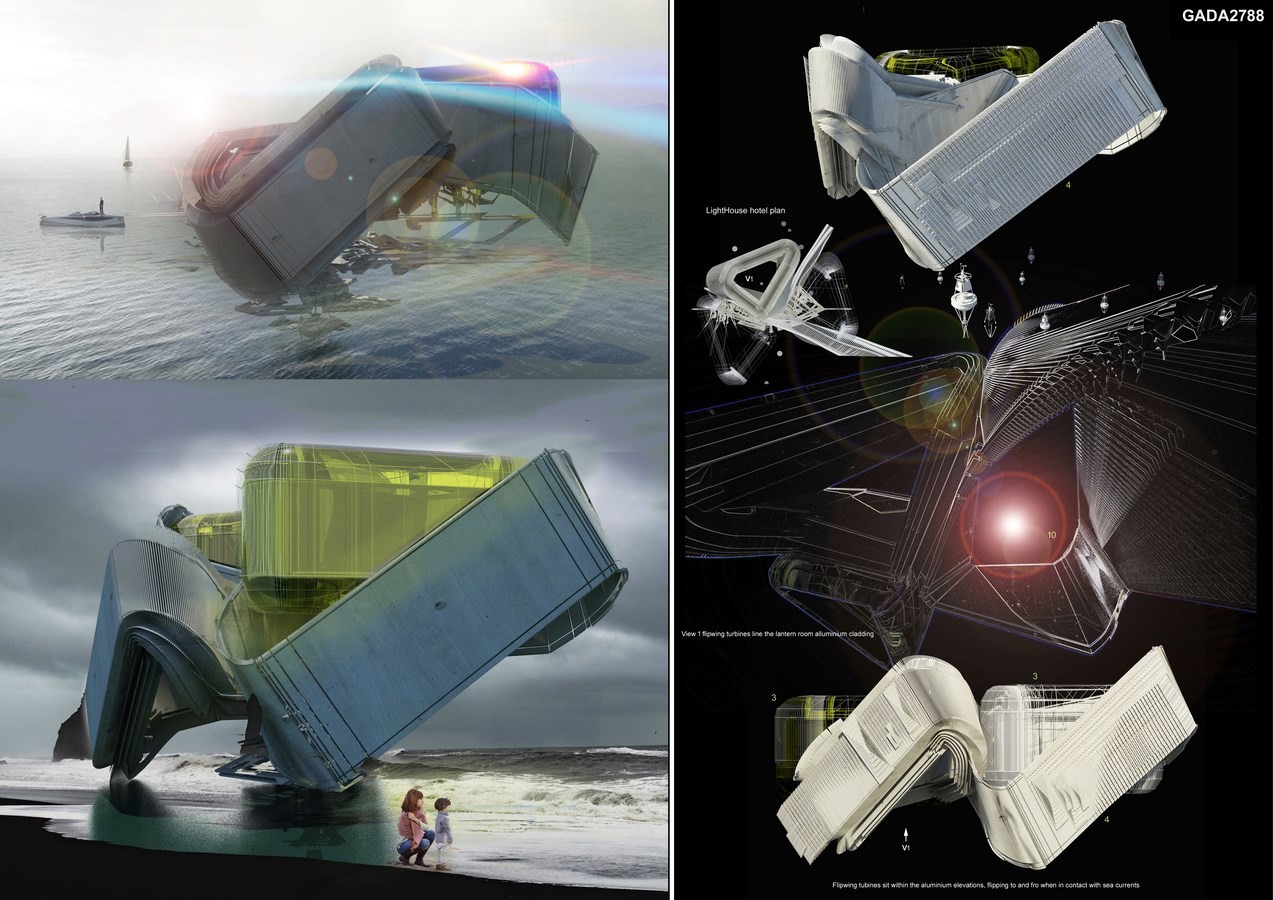 Flipwing turbines flex as water flows over them, similar to an oscillating wave surge converter, the flipwing is connected to the elevations so that they hold the turbine allowing the fin to oscillate backwards and forwards for more effect. Lifting the turbine elevations out of the water minimizes saltwater corrosion, all the materials used are easy to obtain and replace, the cladding comes in a modular format making it easier to repair. The turbines lay flat against the elevation when inactive, they are robust, easier to position vertically and cheap by comparison to the propeller turbines, but not as efficient which is why they are layered in this scheme.
Flipwing turbines flex as water flows over them, similar to an oscillating wave surge converter, the flipwing is connected to the elevations so that they hold the turbine allowing the fin to oscillate backwards and forwards for more effect. Lifting the turbine elevations out of the water minimizes saltwater corrosion, all the materials used are easy to obtain and replace, the cladding comes in a modular format making it easier to repair. The turbines lay flat against the elevation when inactive, they are robust, easier to position vertically and cheap by comparison to the propeller turbines, but not as efficient which is why they are layered in this scheme.
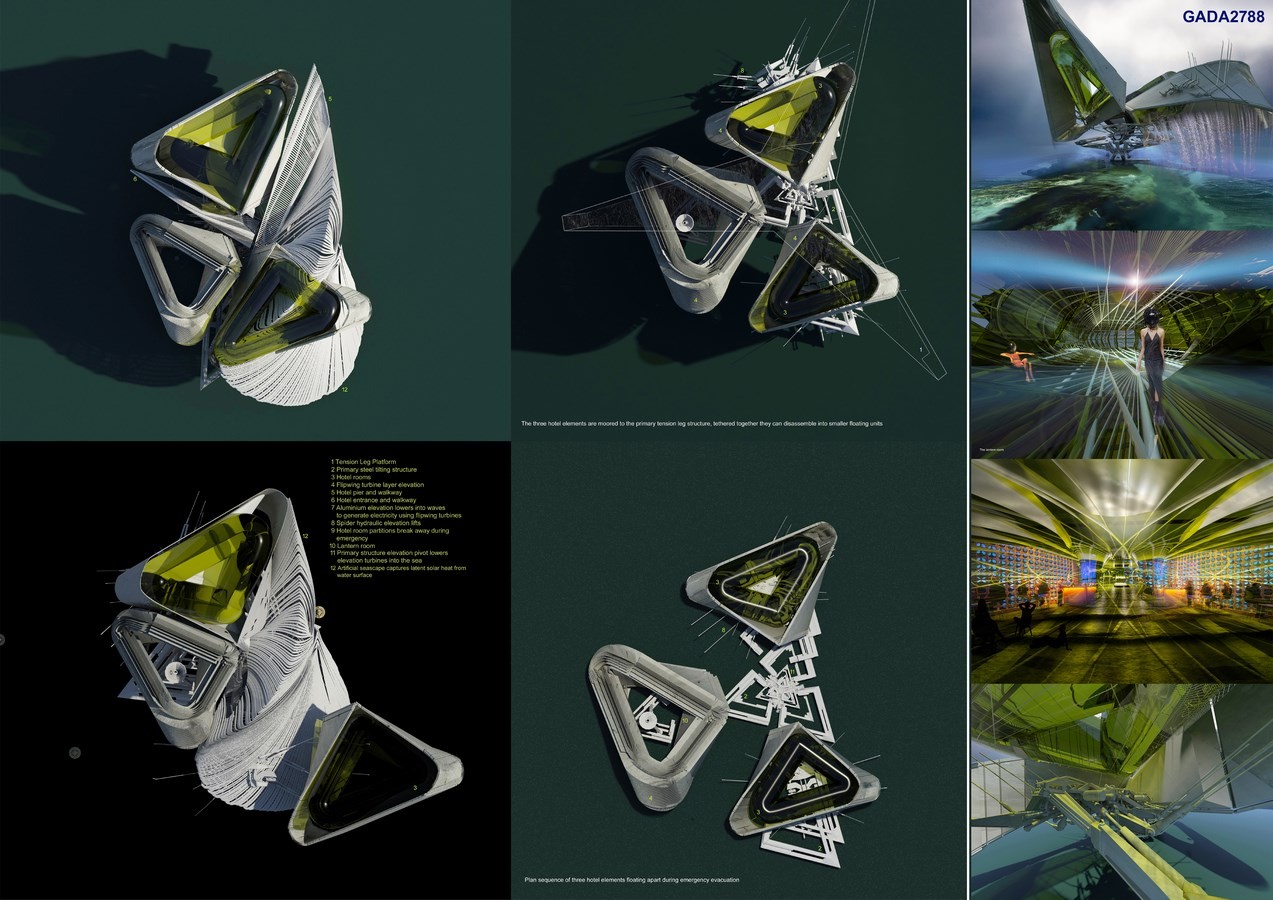 The flipwing turbines convert kinetic water energy into electrical energy, generating enough electrical current to run the lighthouse and desalination filters, any surplus energy is stored. The hotel is fabricated from a series of partly inflated, moulded ETFE membrane sections, lightweight yet durable these airlock sections split apart and float in the event of a rogue wave or emergency. The lighthouse hotel reduces it’s water consumption by storing rainwater, desalinating seawater, grey-water systems and reclaiming water.
The flipwing turbines convert kinetic water energy into electrical energy, generating enough electrical current to run the lighthouse and desalination filters, any surplus energy is stored. The hotel is fabricated from a series of partly inflated, moulded ETFE membrane sections, lightweight yet durable these airlock sections split apart and float in the event of a rogue wave or emergency. The lighthouse hotel reduces it’s water consumption by storing rainwater, desalinating seawater, grey-water systems and reclaiming water.
 Cassion foundations and gravity anchors secure the tension leg platform so that there is no vertical movement only horizontal displacement which is kept at a minimum, the platform is held in place by steel tension cables embedded into the ocean floor using a gravity anchor. The lantern room, located at the top of the hotel, is revealed when the elevations lower during storms, the Fresnel glass lantern light projects out over the entire area creating an illuminated glass canopy lobby. The refracted light intensifies as it reflects into and out from it’s surroundings blurring the edges between interior and exterior space.
Cassion foundations and gravity anchors secure the tension leg platform so that there is no vertical movement only horizontal displacement which is kept at a minimum, the platform is held in place by steel tension cables embedded into the ocean floor using a gravity anchor. The lantern room, located at the top of the hotel, is revealed when the elevations lower during storms, the Fresnel glass lantern light projects out over the entire area creating an illuminated glass canopy lobby. The refracted light intensifies as it reflects into and out from it’s surroundings blurring the edges between interior and exterior space.

